Harley Davidson is a renowned motorcycle brand known for its iconic designs and powerful engines. However, as with any vehicle, proper maintenance is crucial for optimal performance and safety.
One crucial aspect of motorcycle maintenance is tire pressure. The right tire pressure not only ensures a smooth and comfortable ride but also affects the handling and longevity of the tires. With numerous models and tire sizes, it can be overwhelming for Harley Davidson owners to manually determine the correct tire pressure for their bikes.
Here, we will delve into the importance of maintaining the correct tire pressure and examine the Harley Davidson tire pressure chart in detail. Whether you are a seasoned rider or a new enthusiast, this guide will provide all the necessary information to keep your Harley Davidson running at its best.
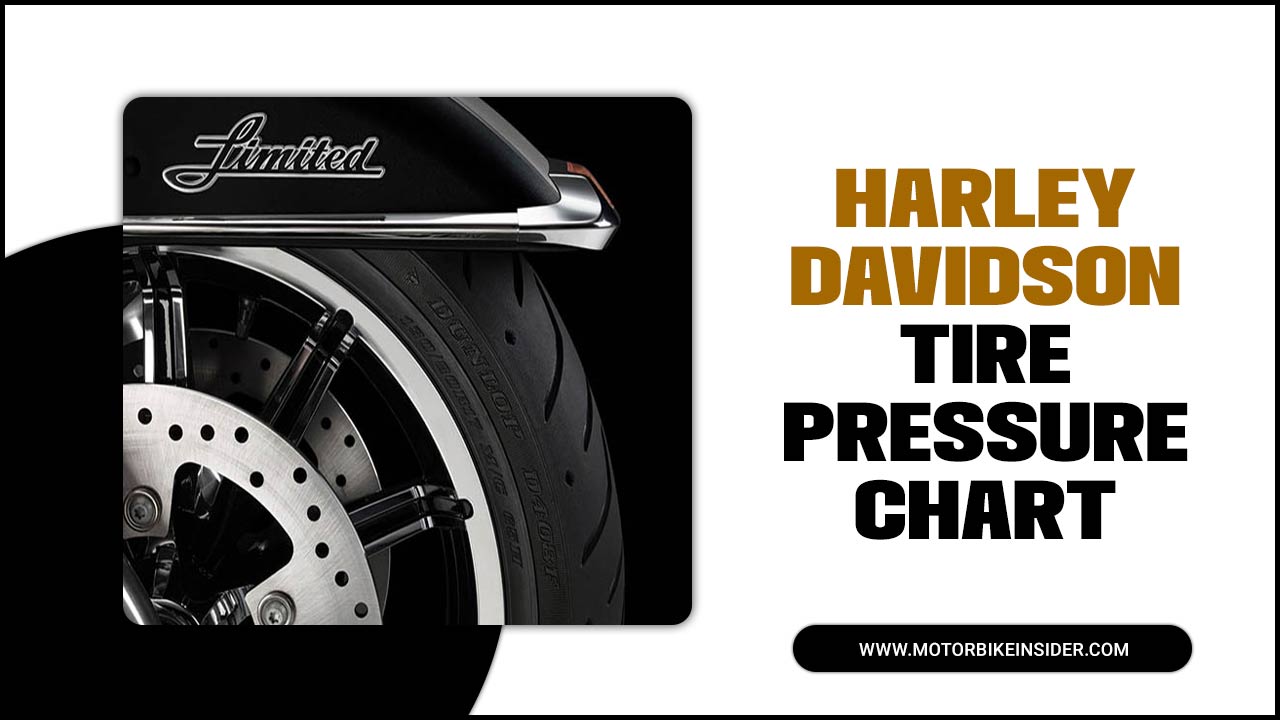
Harley Davidson Tire Pressure Chart – What is the Correct Tire Pressure
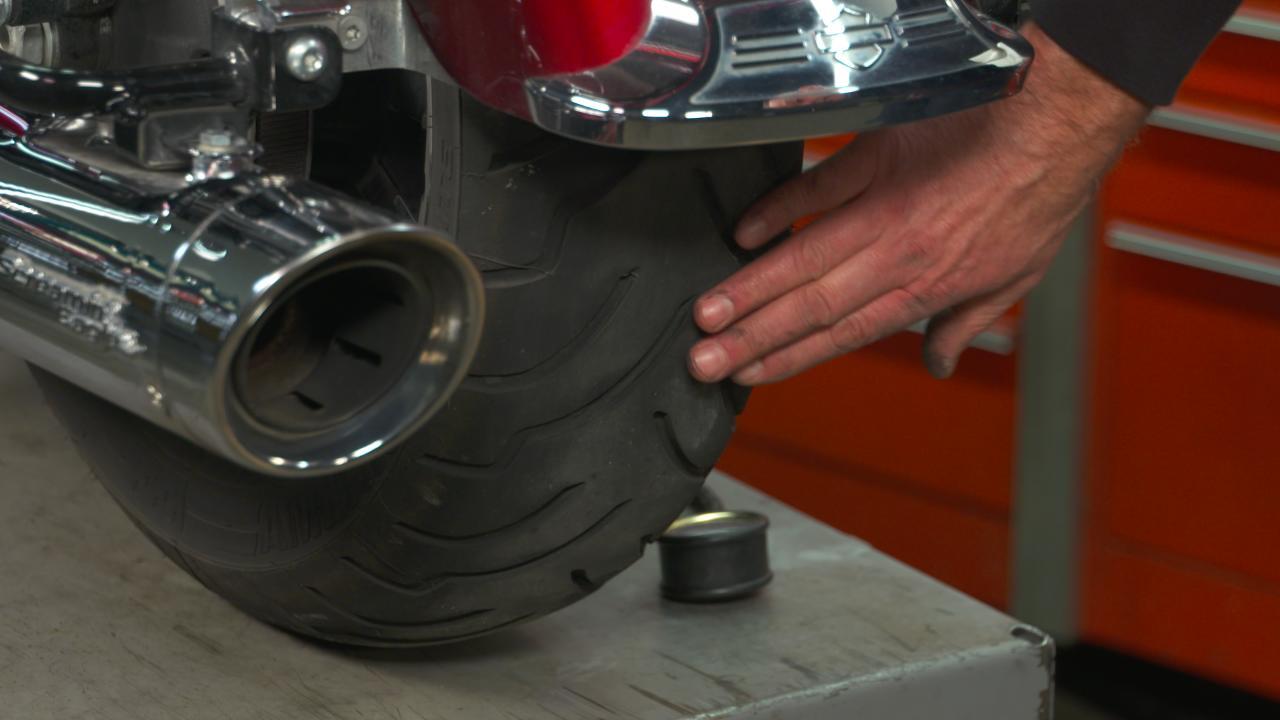
As a standard, you should maintain 36PSI for the front and 40PSI for the rear tire. However, you will see different tire pressure in some Harley motorcycle models. Hence, we will discuss the Harley Davidson touring tire manufacturers’ pressure on all the popular Heavier motorcycles from Harley.
As you see, the tire sidewall pressure remains the same for almost all the Harley motorbike models. Also, the chart includes the tire wear max pressures in cold temperatures only. You must realize that the tire’s maximum pressure changes in various Ambient temperatures and ambiences.
So, the recommended tire pressure for Harley’s in a cold region won’t be ideal for motorcycles in hot and humid conditions. Hence, you must adjust the tire pressure to maintain the motorbike niches properly. Here is our Harley Davidson tire pressure chart:
| Harley Davidson Models | Recommended Tire Pressure | Recommended Tire Pressure |
| Front Tire | Rear Tire | |
| Electra Glide | 36PSI | 40PSI |
| Harley-Davidson Fat Boy | 36PSI | 42PSI |
| Harley Forty-Eight | 36PSi | 40PSI |
| Harley Forty-Eight Special | 36PSI | 40PSI |
| Harley Iron 883 | 30PSI | 40PSI |
| Street Rod | 32PSI | 36PSI |
| Road King | 36PSI | 40PSI |
| Harley-Davidson 1200 Custom | 30PSI | 36PSI |
| Harley Low Rider | 32PSI | 36PSI |
| Super Low Rider | 36PSI | 42PSI |
| Heritage Softail Classic | 36PSI | 40PSI |
| Dyna | 36PSI | 42PSI |
| FXDC Super Glide | 30PSI | 36PSI |
| Pan America 1250 | 32PSI | 36PSI |
An Important Note To Maintain The Right Tire Pressure
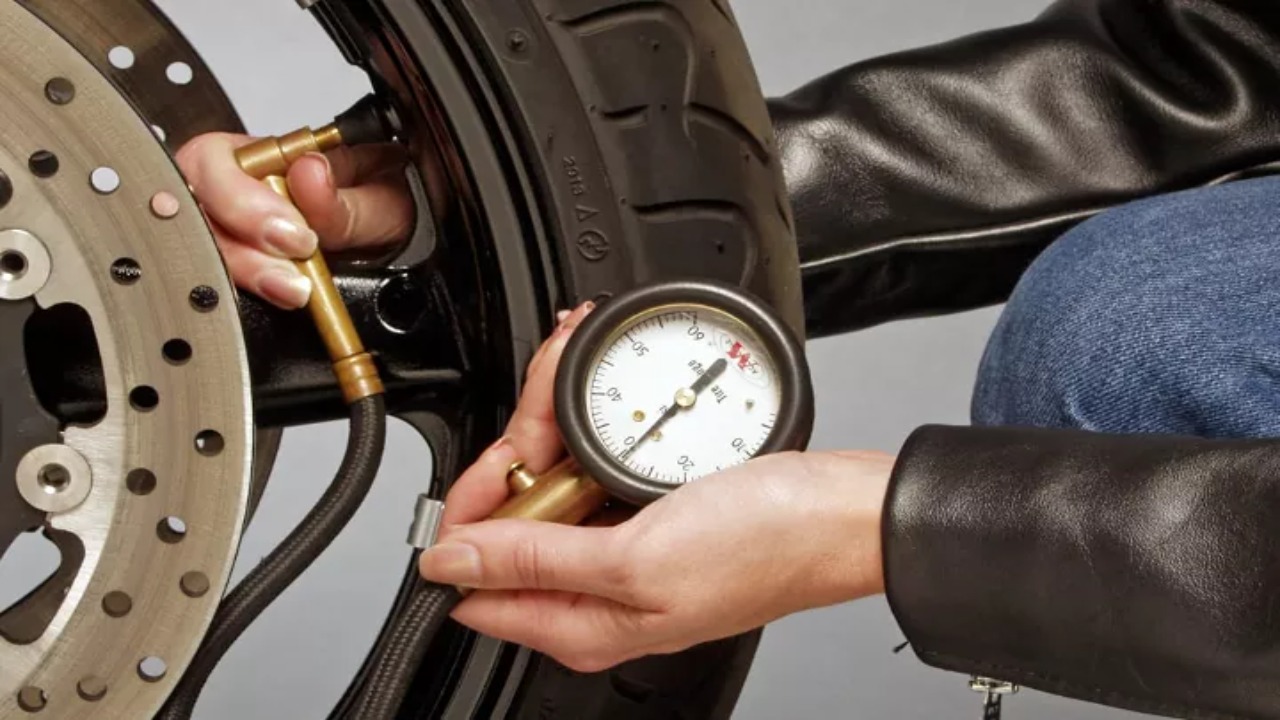
The tables we listed above discuss the decrease in tire pressure in ideal conditions. Also, we measured it in cold conditions. But you won’t always drive in ideal conditions. Instead, you will take your motorcycle on different roads and ride it mile after mile throughout the year in different weather.
That’s why we have figured out how to find the right tire life pressure for motorcycles in different situations. Many motorcyclists prefer it as the “Rule of 2” because it requires adding or subtracting 2PSI. It includes:
Highway Streets
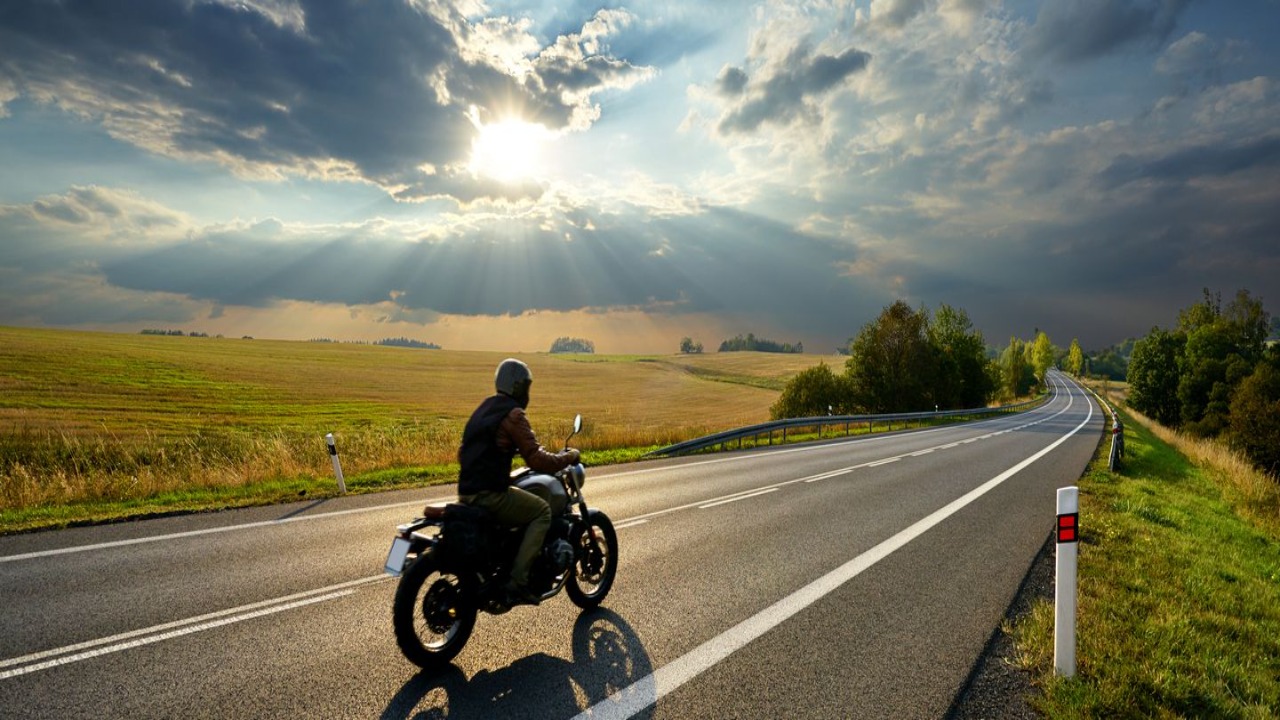
Add 2PSI pressure while riding on highway streets. For instance, Harley Davidson Softail’s optimal tire pressure in col condition is 36PSI and 40PSI. You need to add 2PSI more for driving the Softail model on highways. It means the preferable motorcycle tire pressure pressure for Softail on highways will be 38PSI and 42PSI. When experiencing reduced traction, adjusting the tire pressure accordingly is crucial for optimal grip and control.
Driving In Summer
When you drive Harley motorcycles in summer, you must subtract 2PSI from its original pressure. It will help to maintain the right tire engagement. For instance, Street Glide models have 36PSI and 40PSI pressure for their front and rear tire gauges. It is suitable for cold conditions. When you ride the Street Glide in summer, you should reduce the pressure for both tires by 2PSI. So, its front and rear tires will require 34PSI and 40PSI in summer, respectively.
Driving In The Mountains
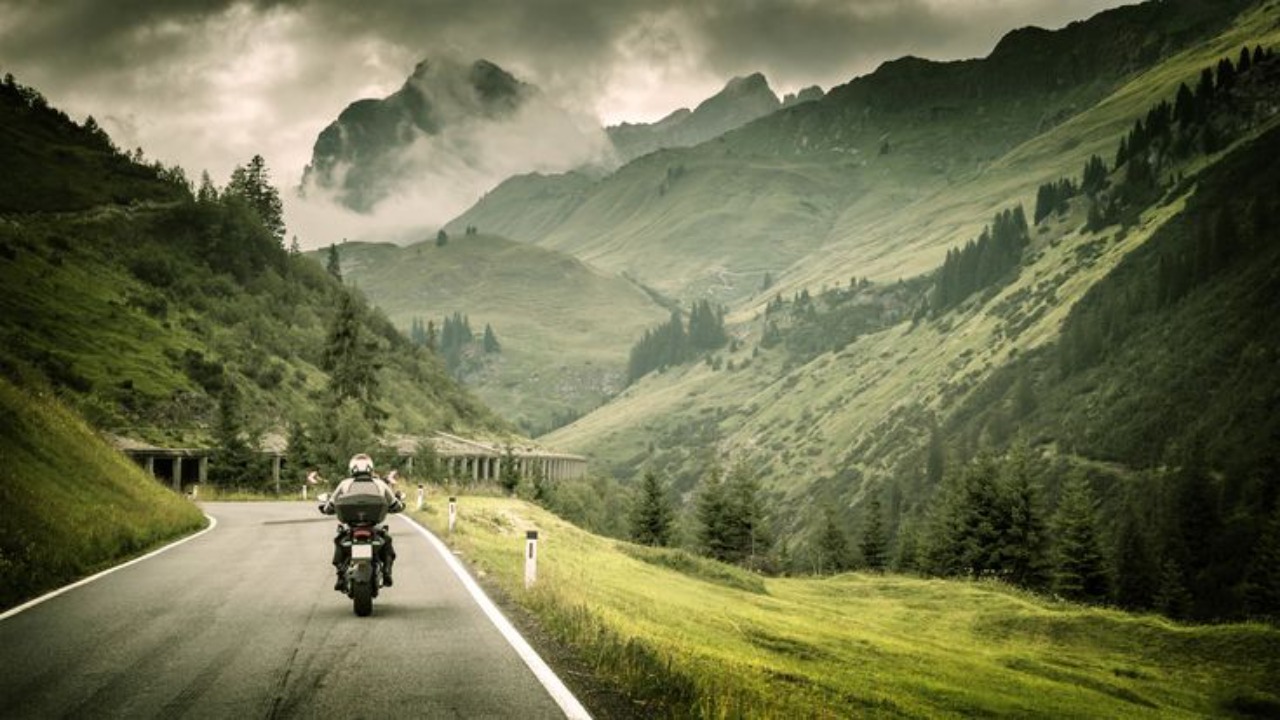
You must be careful when you drive through the mountain and high altitudes. As a result, you need to maintain the right tire pressure. Likewise, for driving pressure for summers, you must subtract 2PSI from the bike’s original Harley-Davidson co-branded tire pressure.
Discover the expertise of a passionate blogger who breaks down the intricacies of the Harley Davidson tire pressure chart. The depth and spacing of the tread patterns on Harley Davidson tires help to disperse water, improving wet weather performance and reducing the risk of hydroplaning.
Tips On Measuring Tire Pressure
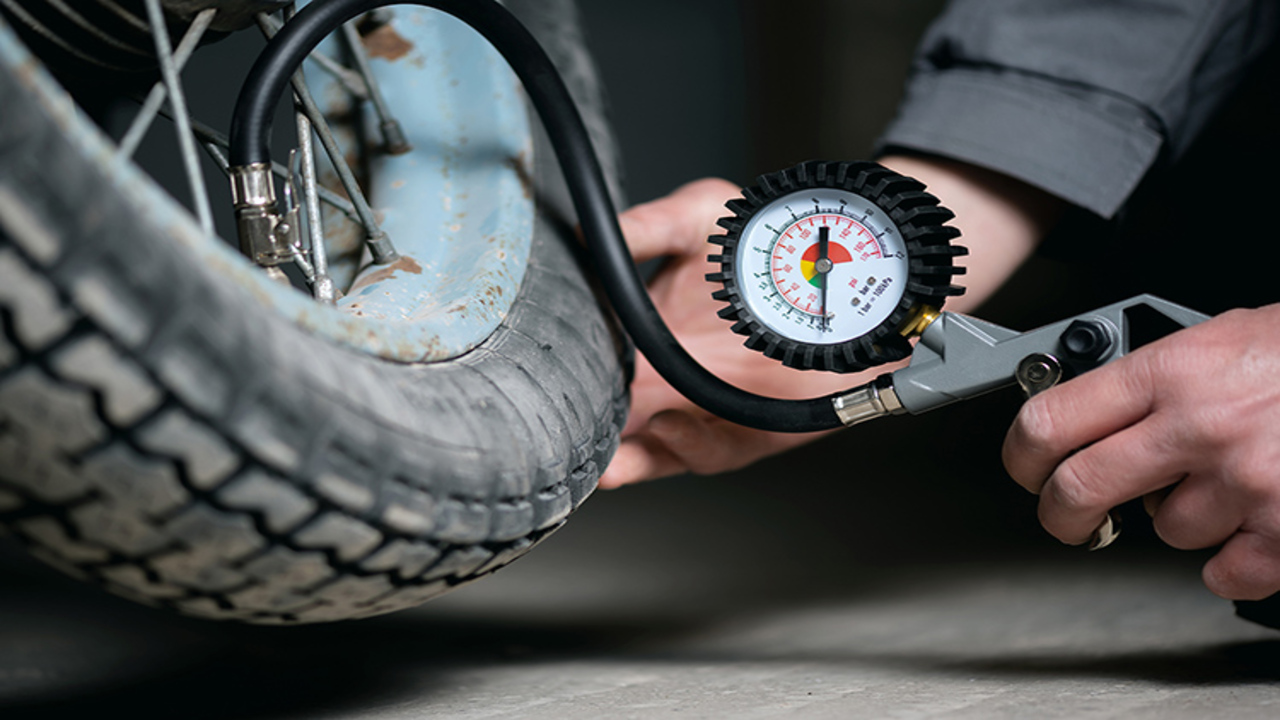
You have undergone the tire pressure chart for Harley Davidson motorcycles. But how do you know if your motorcycle has the right pressure in its tire? In the next five steps, we will show you how to check tire pressure shortly. The process will not take more than a couple of minutes. So, we suggest you measure and adjust the tire pressure at least twice a month.
- Find the air cap valve of the tire and remove it safely.
- As you open the valve, press the tire pressure-measuring gauge. Insert the gauge immediately and allow the air pressure to work naturally.
- Now, check the reading on the tire pressure gauge monitor. You can use traditional or digital PSI tire pressure gauges.
- Once you have the readings, compare them to Harley’s recommended pressure chart.
- Adjust the pressure of the front or rear tire pressures if need be.
Conclusion
Maintaining proper tire pressure is crucial for ensuring a safe and smooth ride on your Harley Davidson motorcycle.it is crucial for Harley Davidson riders to regularly check and maintain their tire pressure according to the recommended levels provided by the manufacturer. Riders can use the Harley Davidson tire pressure chart to ensure optimal performance and safety while on the road.
Ignoring tire pressure can lead to decreased handling and control and potential accidents. As responsible riders, let us prioritize the proper maintenance of our tires and follow the guidelines provided by the experts at Harley Davidson. After all, a well-maintained motorcycle ensures a smoother and more enjoyable ride.
Frequently Asked Questions
What Psi Should Harley Tires Be?
The recommended psi for Harley tires can vary depending on the specific model and tire type. However, a commonly recommended psi range for Harley tires is typically between 36-42 psi.
What Is The Correct Psi For Motorcycle Tires?
Generally, motorcycle tires typically have a recommended PSI range of 28-36 PSI for the front tire and 30-42 PSI for the rear tire. However, it is crucial to check the specific recommendations for your motorcycle to ensure optimal performance and safety.
What Is The Proper Tire Pressure?
The proper tire pressure can vary depending on the vehicle and the correct tire pressure size. It is important to refer to the owner’s manual or the driver’s side door jamb sticker for the recommended tire pressure.
What Is The Correct Psi For Bike Tyre?
As a general rule, most road bike tires should be inflated to a PSI range of 80-130, while mountain bike tires may range from 30-50 PSI.
Is 40 Psi Too High For Bike?
No, 40 psi is not too high for a bike tire. However, the appropriate motorcycle tire pressure for a bike depends on various factors such as the type of bike, rider’s weight, terrain, and personal preference.

There is a math error in your paragraph that says…”Driving In Summer… When you drive Harley motorcycles in summer, you must subtract 2PSI from its original pressure. It will help to maintain the right tire engagement. For instance, Street Glide models have 36PSI and 40PSI pressure for their front and rear tires. It is suitable for cold conditions.
When you ride the Street Glide in summer, you should reduce the pressure for both tires by 2PSI. So, its front and rear tire will require 34PSI and 40PSI in summer, respectively.”
You said to subtract 2 PSI for “both tires” so your final numbers should be 34PSI and 38PSI in summer, respectively… not 34 and 40.